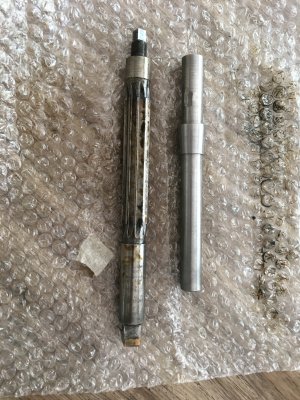- Joined
- May 27, 2016
- Messages
- 3,477
Firstly - following the thread hijack rabbit-hole. I rode a vintage 500cc Velocette across part of what was Rhodesia, along with a friend who was riding a Norton. After the "accident" where he rode into a deer, I ended up taking the deer home strapped across the back of the Velocette. We kept to the back roads in the early evening, not wishing to explain this novel form of "hunting". The venison biltong (jerky) turned out great! (er.. a little yada??)
To reamers: Many kinds - adjustable even, some with square ends as "hand reamers". We get spiral reamers, too, which prompts the question. On the fine finish spiral reamers, is it that they have a LEFT-hand spiral, but with the cutting edges on the back of the flutes such that they are rotated clockwise?.
Are reamers with RIGHT-hand spirals ever known?
It's just that I can get confused. When we say (RH) reamers, we mean ones which cut when turned clockwise, regardless that the spirals might go the opposite way to (say) the flutes on a drill bit.
I do know that if you try to use a straight flute reamer up a hole with a keyway, the situation is more or less doomed!
To reamers: Many kinds - adjustable even, some with square ends as "hand reamers". We get spiral reamers, too, which prompts the question. On the fine finish spiral reamers, is it that they have a LEFT-hand spiral, but with the cutting edges on the back of the flutes such that they are rotated clockwise?.
Are reamers with RIGHT-hand spirals ever known?
It's just that I can get confused. When we say (RH) reamers, we mean ones which cut when turned clockwise, regardless that the spirals might go the opposite way to (say) the flutes on a drill bit.
I do know that if you try to use a straight flute reamer up a hole with a keyway, the situation is more or less doomed!







